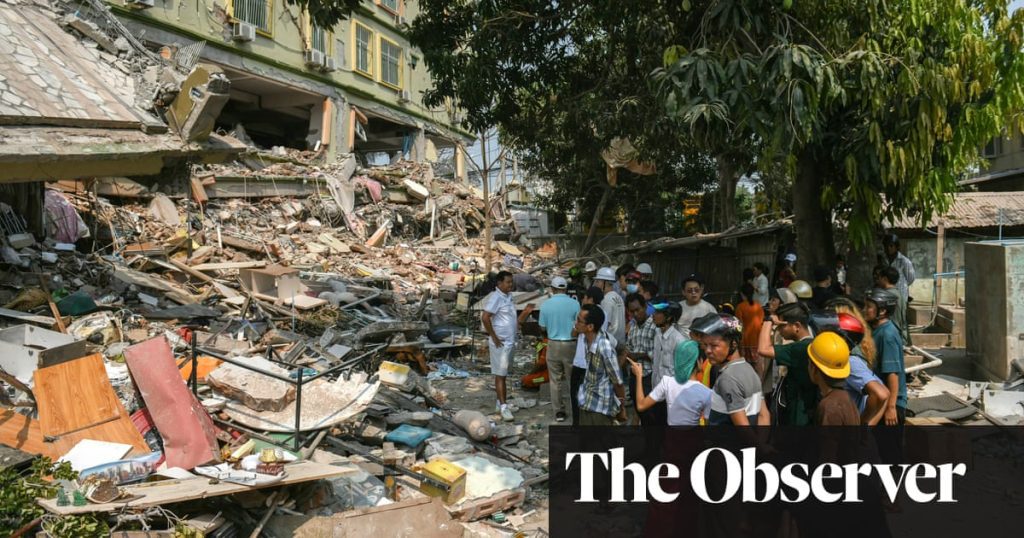Rescue Efforts Continue After Myanmar Earthquake
For a second consecutive night, rescue teams have been working tirelessly to locate survivors following a catastrophic earthquake in Myanmar that has claimed the lives of at least 1,644 individuals and left thousands more injured.
Rescue workers, often lacking adequate protective gear and sometimes using only their bare hands, raced to pull survivors from the debris of numerous buildings destroyed by the 7.7-magnitude quake that struck on Friday.
In a rare moment of hope for the weary emergency crews, a 30-year-old woman was saved after being trapped for over 30 hours beneath a collapsed apartment complex in Mandalay, the nation’s second-largest city and one of the most severely impacted regions. Phyu Lay Khaing was rescued from the Sky Villa Condominium and was subsequently taken to a hospital where she was reunited with her husband, Ye Aung. Concerns remain for more than 90 others believed to still be trapped in the structure.
In nearby Thailand, Bangkok’s governor Chadchart Sittipunt has announced that recovery efforts would persist at the site of a 30-story building that collapsed while under construction. He expressed confidence that survivors may still be found, adding that heavy equipment, including cranes and diggers, was being used to facilitate access. At least 10 fatalities have been reported in Bangkok, with many more individuals unaccounted for.
The ruling junta of Myanmar has confirmed 1,644 confirmed deaths and 3,408 injuries, while others remain missing. Junta leader Min Aung Hlaing made a rare request for international assistance and declared a state of emergency in six regions of the country. Aid began to trickle into Myanmar, with support from Russia and China—two of the junta’s few allies—along with India offering search and rescue teams and Malaysia preparing to send personnel.
Complicating relief efforts are communication breakdowns, damaged roadways, and ongoing conflicts that have plagued the nation since the military coup in 2021. The junta has faced strong resistance from various groups, and its brutal strategies continue, including airstrikes that persisted even after the earthquake, particularly in Sagaing, close to the quake’s epicenter.
The scale of the disaster remains uncertain, and aid organizations have indicated that coordinating responses will be significantly challenging. Reports suggest severe damage to hospitals and health facilities, with a critical shortage of medical supplies. Large infrastructures, like bridges, roads, and public buildings, have also suffered extensive damage. Emergency responses are already in motion, with multiple countries, including the UK and EU, announcing funding to assist those affected.



